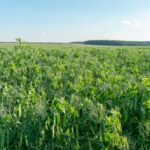Effective land preparation is the foundation of a successful farming operation. However, many South African farmers, particularly those new to the industry, encounter setbacks due to improper land preparation. Here are ten common mistakes to avoid to ensure optimal productivity.
1. Neglecting Soil Testing
Failing to test soil before planting is a common oversight. Soil testing provides critical information about pH levels, nutrient content, and soil structure. Without this data, farmers risk planting crops in unsuitable conditions, leading to poor yields. Always test your soil and apply the necessary amendments to improve fertility and structure.
2. Over-Tilling the Soil
While tilling is essential to break up compacted soil, over-tilling can harm soil health by destroying its structure and beneficial microorganisms. This can lead to erosion and reduced water retention. Use conservation tillage practices to maintain soil integrity and protect its ecosystem.
3. Skipping Weed Management
Allowing weeds to thrive before planting is a costly mistake. Weeds compete with crops for nutrients, water, and sunlight, reducing yields. Effective weed management, including pre-emergent herbicides or manual removal, should be an integral part of land preparation.
4. Ignoring Drainage Issues
Poor drainage leads to waterlogging, which can damage crops and reduce soil aeration. Many farmers fail to assess and improve drainage systems before planting. Implementing solutions such as contour farming, drainage trenches, or raised beds can prevent water accumulation and protect crops.
5. Underestimating the Importance of Organic Matter
Soil organic matter plays a vital role in improving soil fertility, structure, and water retention. Some farmers neglect to add organic matter like compost, manure, or cover crops during land preparation. Incorporating organic materials into the soil enhances its health and long-term productivity.
6. Failing to Remove Debris
Leaving rocks, stumps, and other debris on the field can obstruct equipment and hinder crop growth. Many farmers rush into planting without thoroughly clearing the land. Investing time in removing obstacles ensures smoother operations and healthier crops.
7. Incorrect Application of Fertilizers
Applying fertilizers without proper planning can harm crops and the environment. Over-fertilization may lead to nutrient imbalances, while under-fertilization results in poor crop growth. Use soil test results to guide the correct type, amount, and timing of fertilizer application.
8. Overlooking Crop-Specific Preparation Needs
Different crops have unique requirements for planting depth, spacing, and soil conditions. A one-size-fits-all approach to land preparation often leads to suboptimal results. Research the specific needs of your chosen crops and tailor your land preparation practices accordingly.
9. Failing to Consider Erosion Control
In areas prone to heavy rains or wind, soil erosion can be a major issue. Many farmers overlook erosion control measures, leading to nutrient loss and reduced soil quality. Implement strategies such as planting cover crops, building terraces, or using mulch to protect the soil.
10. Rushing the Process
Land preparation requires careful planning and execution. Some farmers rush the process, skipping essential steps like leveling the field, ensuring adequate irrigation infrastructure, or testing the functionality of equipment. Take the time to prepare thoroughly to avoid costly mistakes later in the season.
Proper land preparation is a critical step in ensuring a successful farming season. By avoiding these common mistakes, South African farmers can optimize their land’s potential, enhance crop yields, and promote sustainable farming practices. Taking the time to prepare your land correctly not only saves money and resources but also sets the foundation for long-term agricultural success.
Join 'Farmers Mag' WhatsApp Channel
Get the latest Farming news and tips delivered straight to your WhatsApp
CLICK HERE TO JOIN






